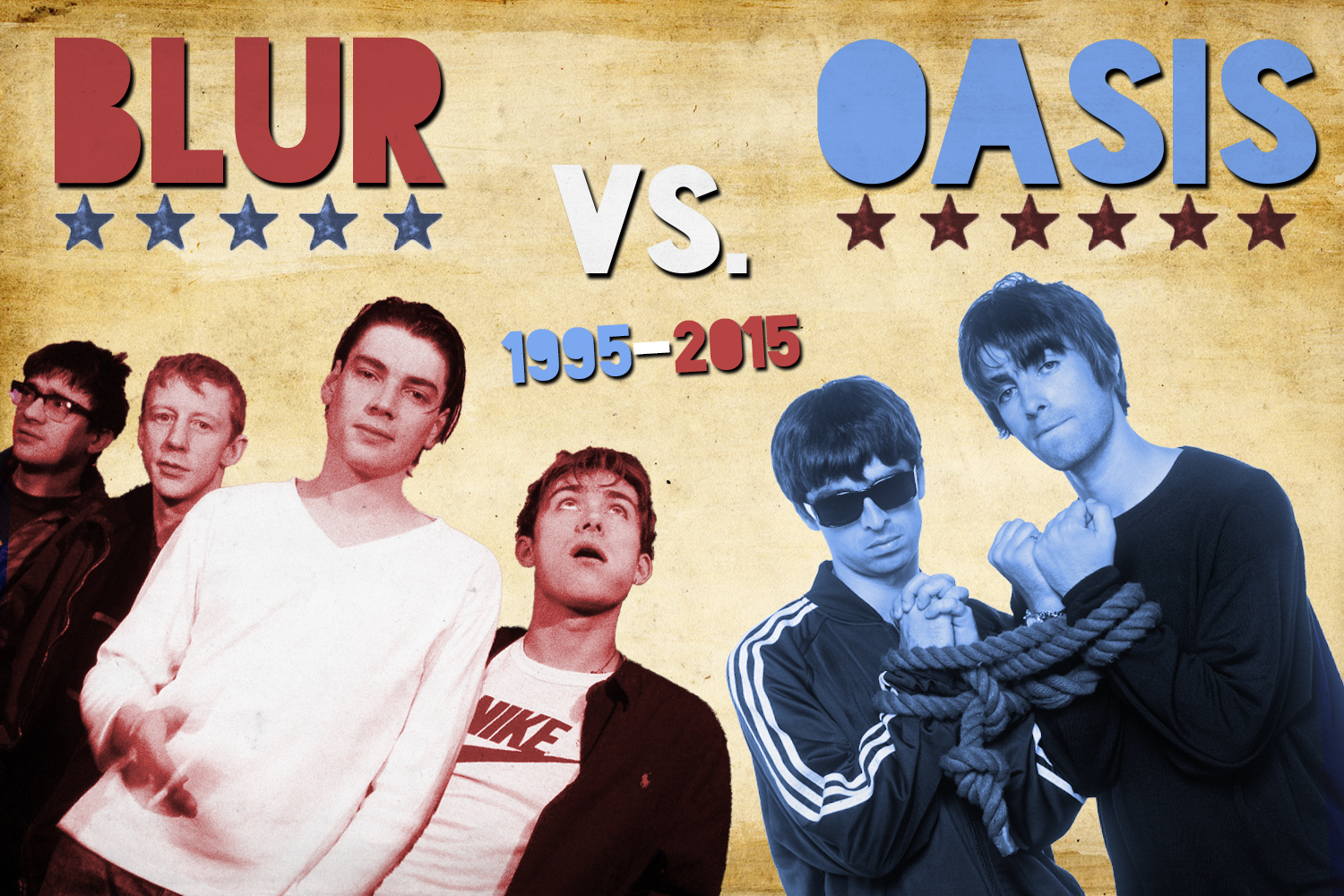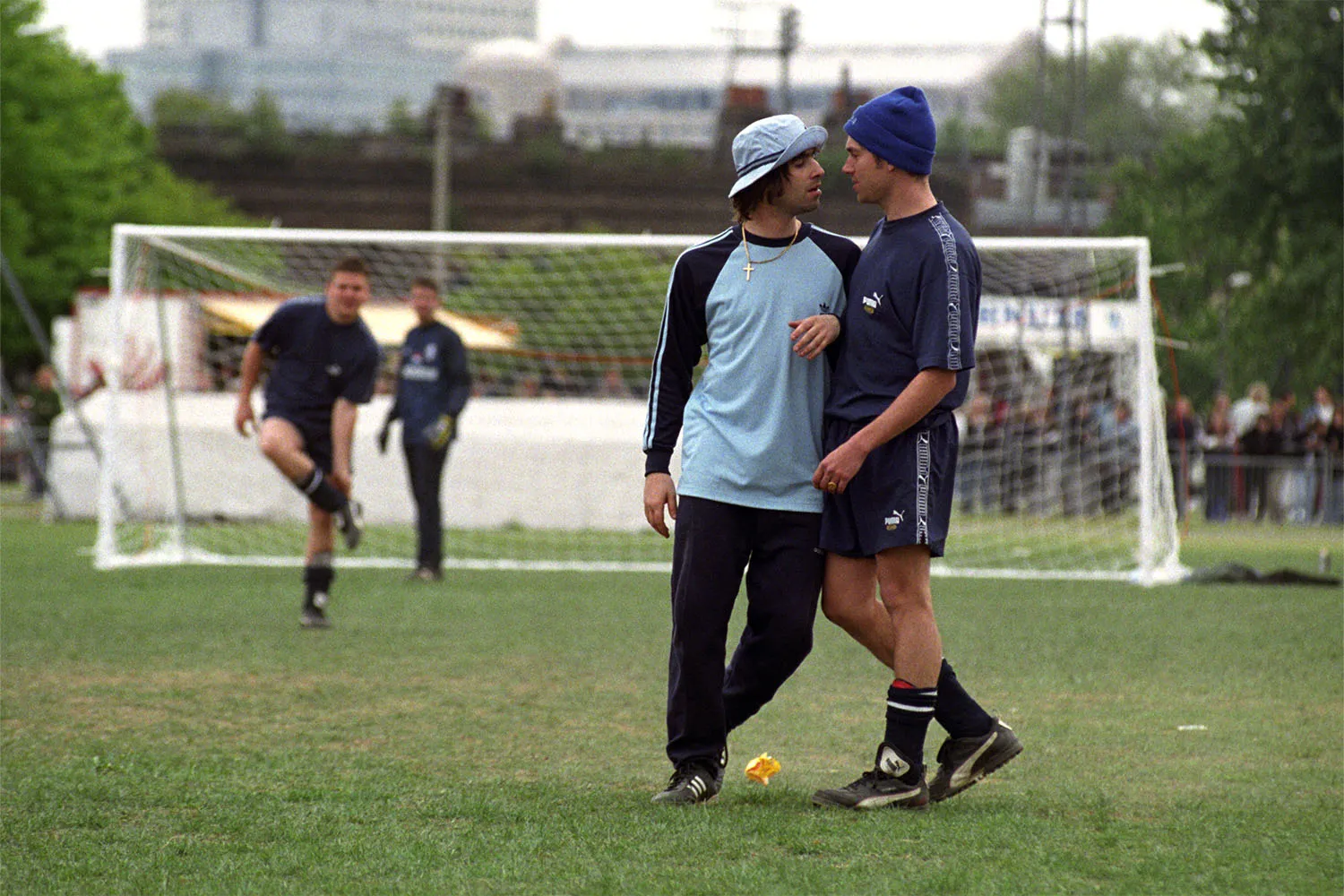Oasis vs Blur
The Britpop Battle and the Marketing Lessons We Can Learn
Was it the North against the South?
The rich against the poor?
The educated versus the ignorant?
The instinctive versus the calculated?
….OR all of the above?
The 1990s was a transformative decade for British music, fuelled by the rise of Britpop – an era-defining movement that pitted two of the decade’s biggest bands against each other: Oasis and Blur. This wasn’t just a musical rivalry; it was a marketing masterclass in differentiation, branding, and audience segmentation.
As we trace the timeline of this legendary battle, we’ll explore how the two bands positioned themselves in the market, how they built their brands, and the lessons marketers can learn from their success.
The Marketing Made Clear Podcast
Check out the Marketing Made Clear Podcast on all good streaming platforms including Spotify:
1991-1993: The Formation and Early Success
When Oasis and Blur started to grow into their styles, a new fringe movement called Britpop (a ‘pseudogenre’ mostly reported as a marketing tool and/or cultural movement) emerged. It was classified as sounding like a typical British alternative rock-type sound, mostly combative to American punk and grunge styles.
From this movement, four bands, commonly called the “big four,” arose: Blur, Oasis, Suede, and Pulp. However, today, Blur and Oasis are seen as the genuine ‘big two.’ Nowadays, it’s inconceivable that Suede were on par with the others, but they were!
Blur formed in 1988, originally as Seymour, before changing their name and signing to Food Records in 1990. Their debut album, Leisure (1991), leaned heavily on the ‘Madchester’ sound but failed to make a significant impact. It wasn’t until Modern Life Is Rubbish (1993) that Blur found their footing, embracing a uniquely British aesthetic that set them apart from the dominance of American grunge.
Meanwhile, Oasis was taking shape in Manchester, formed in 1991 by brothers Noel and Liam Gallagher. Their debut album, Definitely Maybe (1994), was an instant success, becoming the fastest-selling debut album in UK history at the time. Oasis embraced a raw, working-class identity, positioning themselves as the voice of the common man, a stark contrast to Blur’s art-school persona.
Oasis was a band that had a simple and uncomplicated sound, one that seemed to speak to the British masses. Noel Gallagher is often referred to as the mastermind even though Liam was the outspoken, outlandish band member often taken to be “the leader.” When Noel joined the band in 1991, he noticed that the band’s members had unrefined skills, and to combat this, he created rhythms and melodies that were not complex or difficult to play. This proved to be a genius move, and they grew to be beloved for their simplistic style.
At the same time that Oasis was gaining traction, Blur also started to become a mainstream band. They, hence the term Britpop, were a quintessential British band, and they started to rub shoulders with Oasis.
Differentiation is Key
-
Blur and Oasis effectively segmented the market, appealing to different social and cultural demographics.
-
Oasis leaned into their working-class origins, creating an ‘authentic’ appeal that resonated with the masses.
-
Blur positioned themselves as intellectual and experimental, drawing in a more middle-class and art-conscious audience.
1994-1995: The Britpop Movement and the Battle of the Singles
During the Brit Awards of 1995, Damon Albarn, after Blur had received four awards – an unheard-of achievement at the time – said,
“I think this should’ve been shared with Oasis.”
Graham Coxon then added,
“Yeah, much love and respect to them.”
But when Oasis produced Some Might Say, a single that reached number one on the charts, Damon attended their celebration, he says, to congratulate them. Liam reportedly came over to him and said,
“Number f***ing one,”
right in his face. Albarn remembers thinking,
“OK, we’ll see…”
At this point, both bands had their latest albums scheduled for a release date in autumn of 1995, Blur’s in September and Oasis’s in October. This wasn’t a problem until their singles’ release dates clashed. Oasis had their single scheduled to drop one week before Blur’s Country House, meaning Oasis would likely stay at number one. To counter this, Blur moved their release date to match Oasis’s.
This move was like declaration of war!
The date of both releases was now set for August 14, and the atmosphere was tense. Both bands were ready to claim the prize that they thought was rightfully theirs.
The thing about the rivalry was that it was about more than a title or even music – it was a battle between the British class systems. Blur was from the South, which, by stereotypes, meant that the bandmates were better educated and more financially stable than Oasis, who were from the North.
None of Oasis’s bandmates went to college, and before their musical career, they spent time as construction workers. Oasis dubbed Blur as “art school wankers,” while the press deemed Oasis to be working-class heroes. The public seemed to be invested in this one-dimensional view of the bands.
Brand Battles Drive Engagement
-
The head-to-head chart battle created a compelling narrative, increasing sales and media coverage.
-
Blur’s more strategic approach, including a music video featuring comedy legend Keith Allen, showcased the power of storytelling in marketing.
-
Oasis played the long game, focusing on their raw sound and consistency, which contributed to their long-term legacy.

Google Trends: Interest in Oasis and Blur:
1996-2010: Diversification and Market Scarcity as Business Strategies
As Britpop faded, both bands took drastically different approaches to staying relevant.
Damon Albarn, Blur’s frontman, launched Gorillaz in 2001, an animated band that fused multiple genres and redefined what a band could be. This was a textbook example of brand diversification – moving into a new space while leveraging existing brand equity.
Oasis, on the other hand, leaned into market scarcity.
After their split in 2009, they built anticipation with long hiatuses, solo projects, and an eventual reunion of sorts under Liam Gallagher’s solo career and Noel Gallagher’s High Flying Birds.
In 2017, Damon and Noel performed on the same track, We Got the Power, even sharing the stage. Liam was unhappy with this and took to tweeting about the event. But only three years later, in 2021, the two brothers tried to patch their relationship.
MSN reported:
“Oasis star Liam Gallagher started 2021 by attempting to end his long-running feud with brother Noel, telling him he loves him and that this is their year.”
Marketing Takeaway: Diversification vs Scarcity
-
Blur (via Albarn) expanded into new markets, reaching audiences who may not have engaged with Britpop.
-
Oasis capitalised on nostalgia and scarcity, making each return feel like a major event.
-
Both strategies are legitimate: diversification keeps a brand evolving, while scarcity increases demand by limiting supply.

Are You an Oasis Fan or a Blur Fan?
The rivalry between Oasis and Blur often led to assumptions about who their fans were.
Stereotypically, Oasis fans were seen as working-class, Northern, and more down-to-earth, while Blur fans were thought to be middle-class, Southern, and more intellectual. This segmentation was heavily pushed by the media, reinforcing the idea that your favourite band reflected your background, level of education, and even your worldview.
However, reality is rarely that simple.
Music taste is subjective, and while some fans may fit these stereotypes, most do not. Britpop was a movement that transcended class divides, uniting people through a shared love of music. While marketing often relies on segmentation and defining target audiences, it’s also important to recognise that consumers are individuals with diverse preferences. Just as some Blur fans appreciated Oasis’s raw energy, some Oasis fans admired Blur’s artistic experimentation. You can be a fan of both – and many people (including myself) are!
At the end of the day, music isn’t about where you’re from or your social standing – it’s about what resonates with you. The same applies to marketing: while audience personas can be helpful, we must be careful not to oversimplify or rely too heavily on stereotypes when engaging with our audiences.
Conclusion: The Legacy of a Rivalry
The rivalry between Oasis and Blur remains one of the most iconic battles in music history, not only shaping the Britpop era but also offering valuable marketing insights. While Blur won the battle of the singles, Oasis won the war in terms of long-term cultural impact. Both bands took different paths – one through diversification, the other through scarcity – demonstrating that success can be achieved in multiple ways.
Their legacy teaches us that differentiation, brand authenticity, and audience engagement are key pillars of success. Whether in music or marketing, understanding your audience and positioning your brand effectively can define an era – and perhaps even make history.


